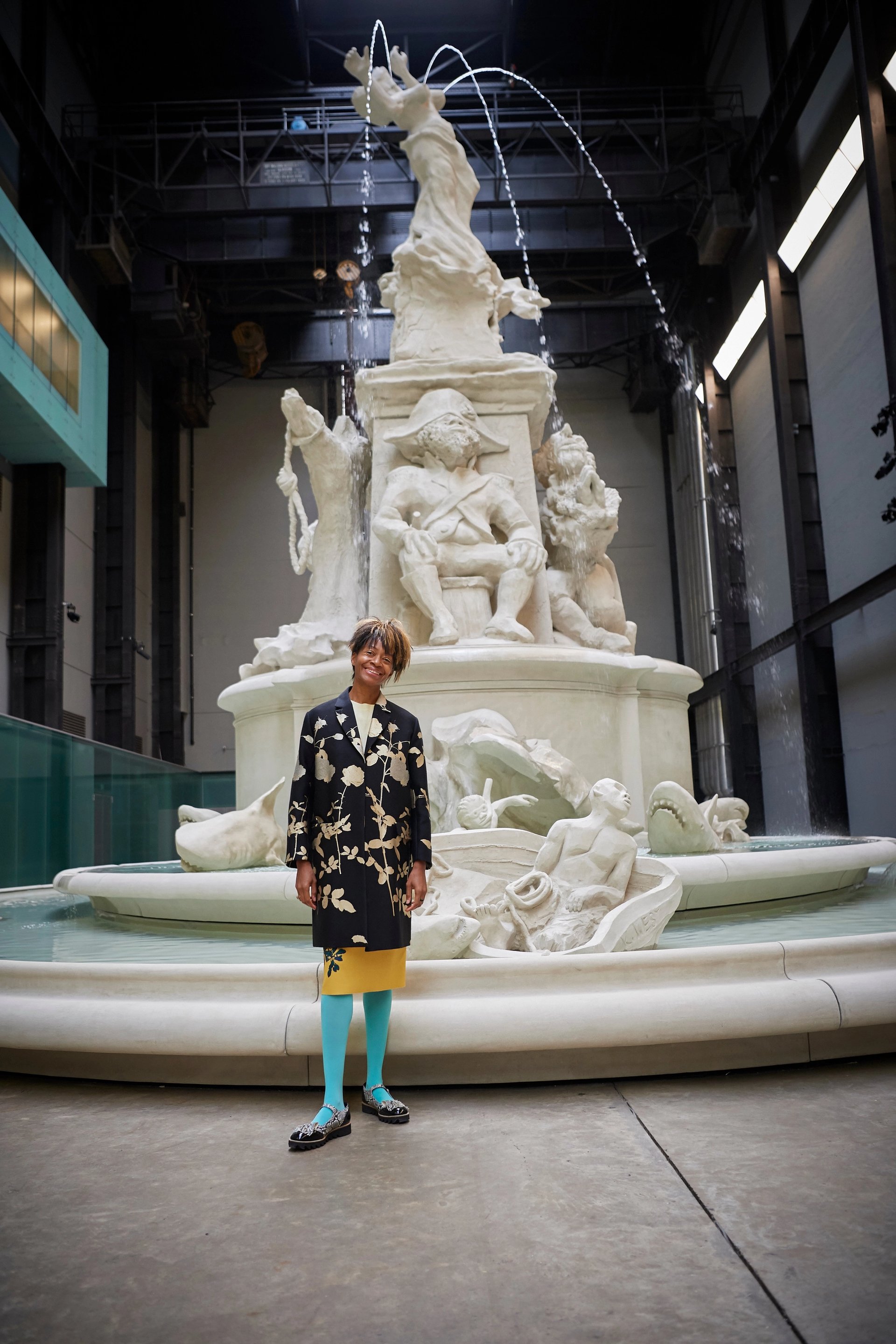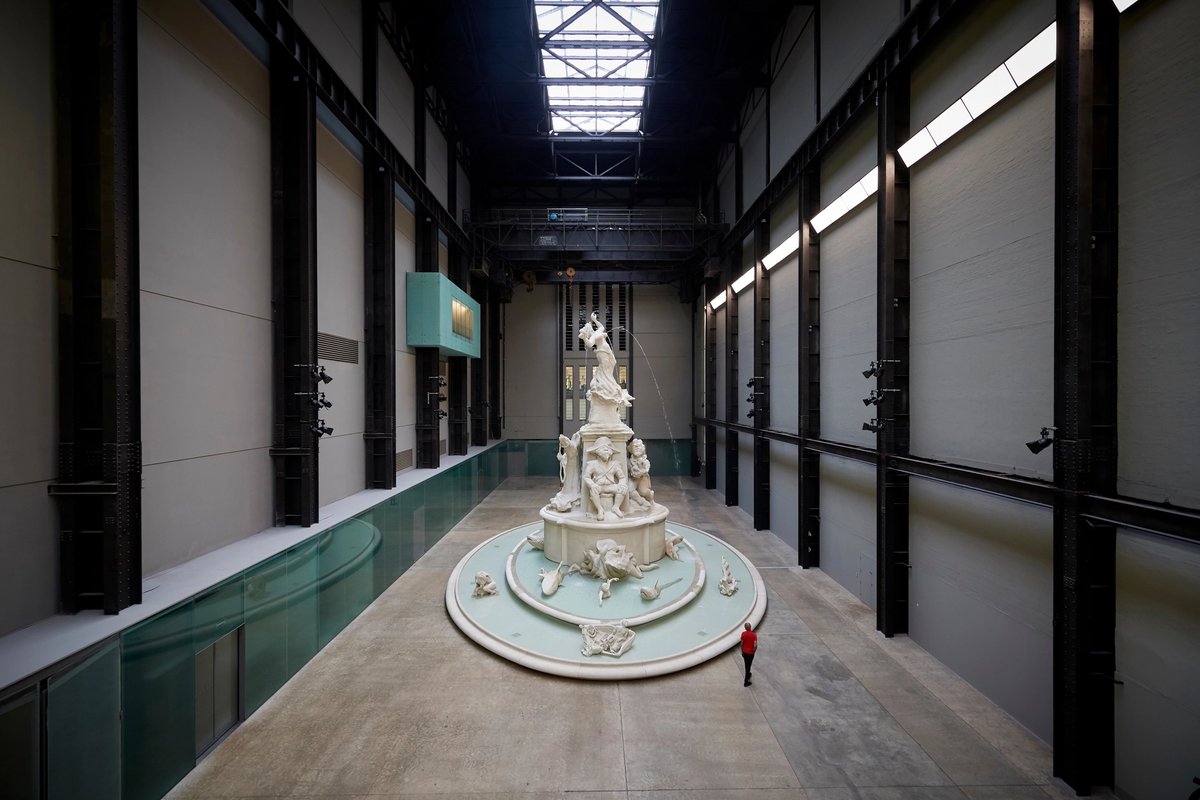Kara Walker ‘s monumental fountain, which recently filled the Turbine Hall at Tate Modern in London, will be dismantled, destroyed and recycled. The piece, Fons Americanus, was due to be on show until 5 April but Tate’s four galleries all closed mid-March in the wake of the coronavirus (Covid-19) epidemic. The work proved to be one of the most popular commissions in the colossal space, drawing thousands of visitors who were encouraged to sit on the bench-like rim of the fountain.
“Like her 2014 installation at the Domino Sugar Refinery [A Subtlety], the Fons Americanus will be destroyed. In keeping with the Tate’s commitment to environmental sustainability, the Fons Americanus was made, in the greatest degree possible, with materials that can be recycled,” says a spokesman for the New York-based gallery Sikkema Jenkins & Co. which represents the artist. Walker said last year however: “I would hope some aspect of it would have another life. It has all the possibilities for living beyond its present [form].”

Kara Walker with her fountain Fons Americanus Photo: Ben Fisher
Walker took on the delicate subject of the British Empire’s legacy in her monumental 13m-high fountain, which was unveiled last October. Fons Americanus, the latest Hyundai commission, rose from two oval basins filled with water, and was modelled on the grandiose Victoria Memorial erected in front of Buckingham Palace in 1911.
A Tate spokeswoman says that Tate has always used the Turbine Hall to host temporary site-specific, specially-made works of art. “In line with the gallery's commitment to the environment, Kara Walker's Fons Americanus was built from reusable cork, wood and metal, enabling materials to be recycled once the commission ends,” she adds.
As with each Tate project, all documentation is archived, including technical records, she adds. “The exhibition catalogue remains a document and archive of the artistic intentions of the work, featuring contributions by the artist and the curator, as well as photographic illustrations of the finished sculpture.”
Video documentation of the work is also accessible via Tate's website, with further film content showing the production process of the sculpture available online via the website of the Brighton-based production studio Millimetre.




